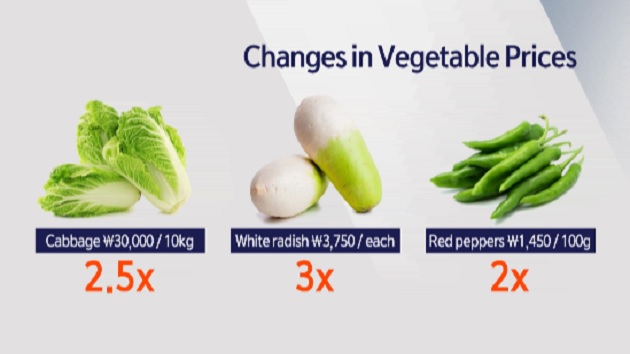
Fruit and vegetable prices have skyrocketed even after the Chuseok holidays, due to a nationwide shortage of crops.
This past summer, which had the longest rainy season on record, as well as a series of typhoons, was a difficult season for farms across the country.
It does not look like the prices of crops will drop any time soon.
Todd Thacker reports.
Supermarket shoppers are checking the cost of vegetables.
The high prices and sticker shock alarm many customers.
This year’s long summer rainy season and consecutive typhoons have spiked fresh vegetable prices.
Consumers hoped that their food bills would drop after the Chuseok holiday, when demand for fresh produce is especially high. But fresh vegetable prices haven't declined.
A 10 kilogram pack of three Chinese cabbages costs 30,000 won. That’s 2.5 times the normal price.
A single white radish is 3,750 won, three times the price of previous years.
Pepper prices have also more than doubled.
Prices of vegetables like spinach and chicory have dropped after Chuseok, but the most sought-after vegetables like radishes and Chinese cabbage remain unchanged.
It's the same story with fresh fruit.
Prices of autumn’s most commonly consumed fruits — apples and pears — have doubled from last year.
Distributors say that prices of fresh fruit and vegetables will not drop until winter crops are harvested.
This year’s poor weather has significantly reduced the supply of fresh produce.
So skyrocketing prices and the burden on household budgets will weigh heavily on consumers for the foreseeable future.
Todd Thacker, KCTV





